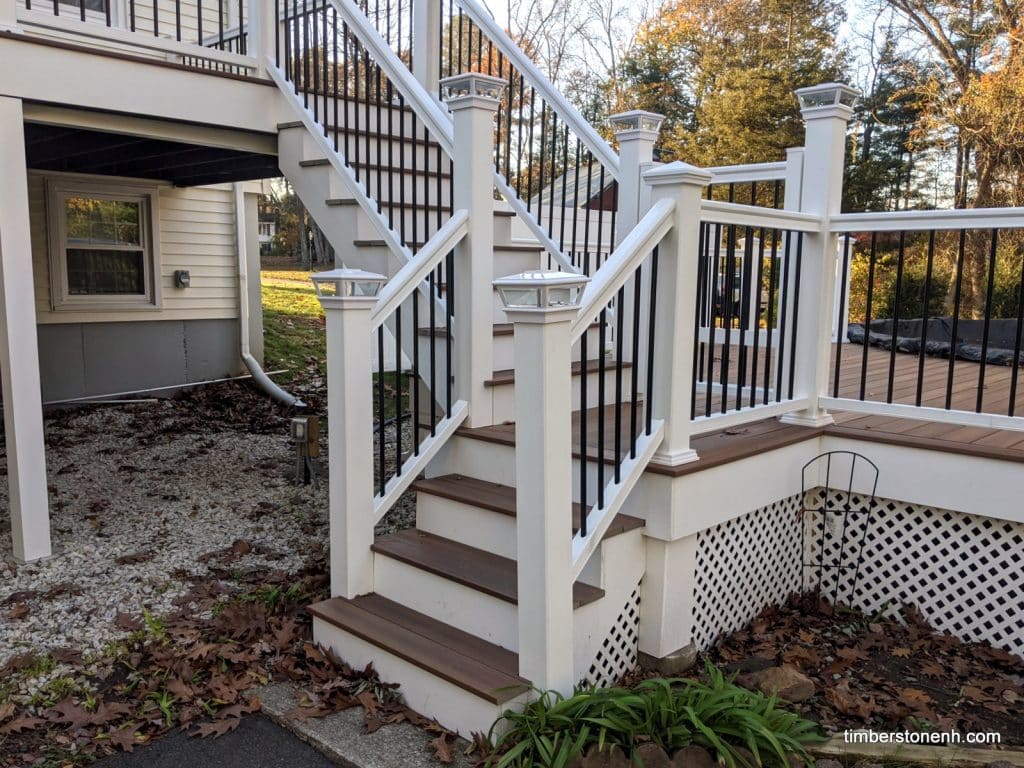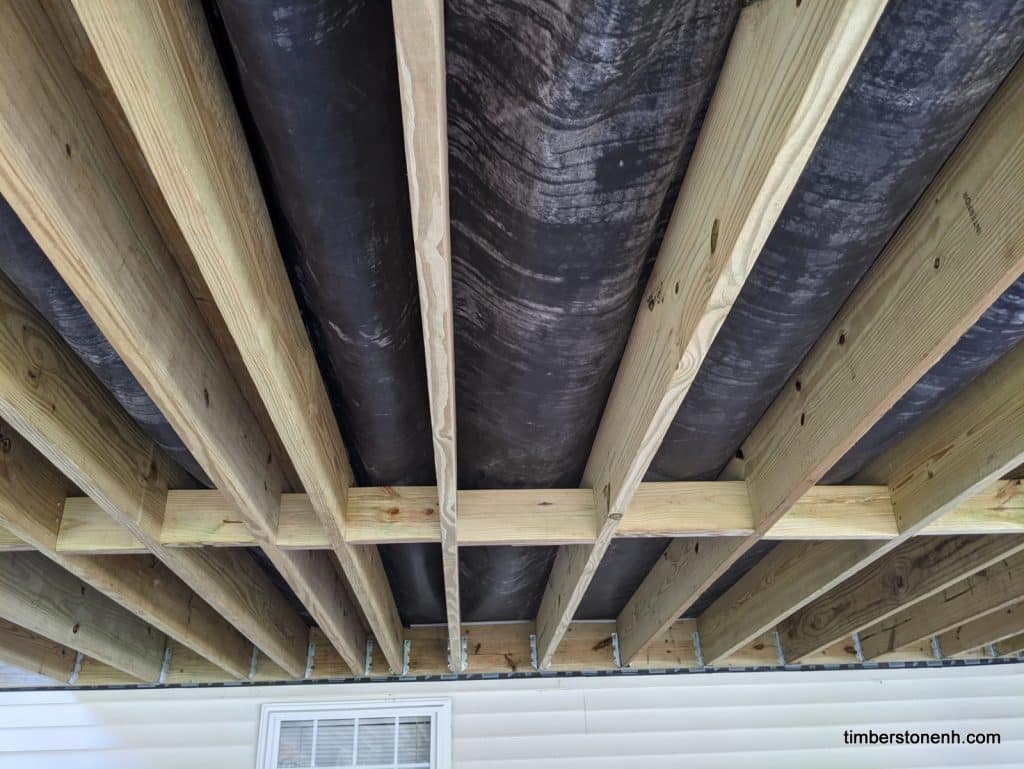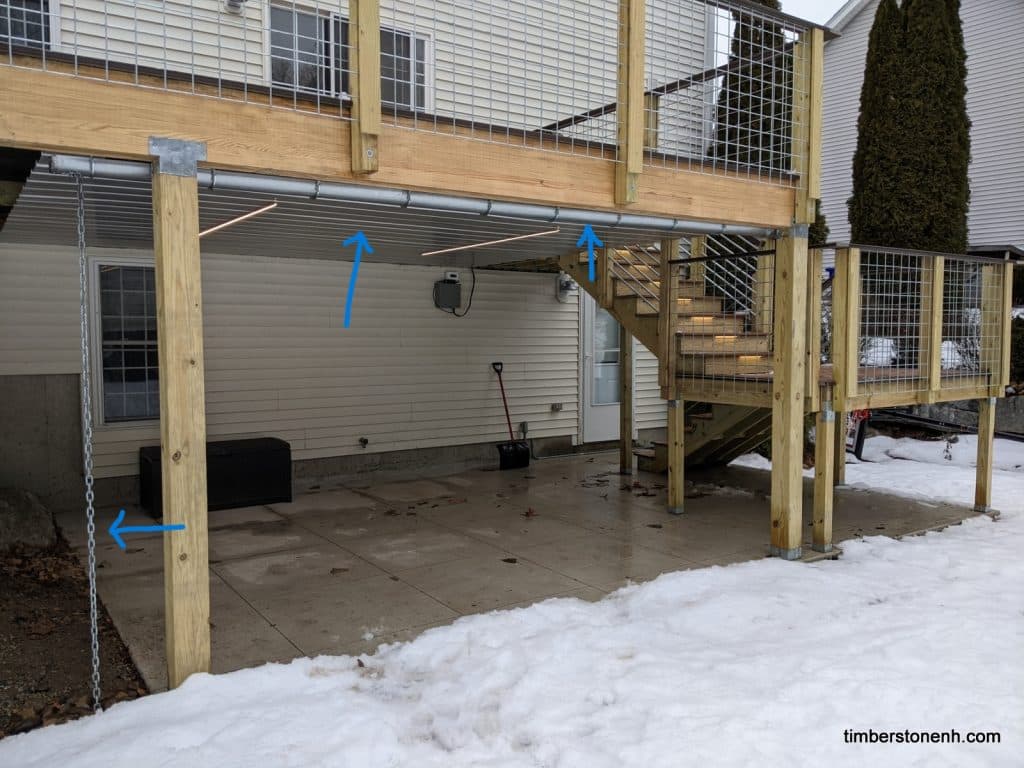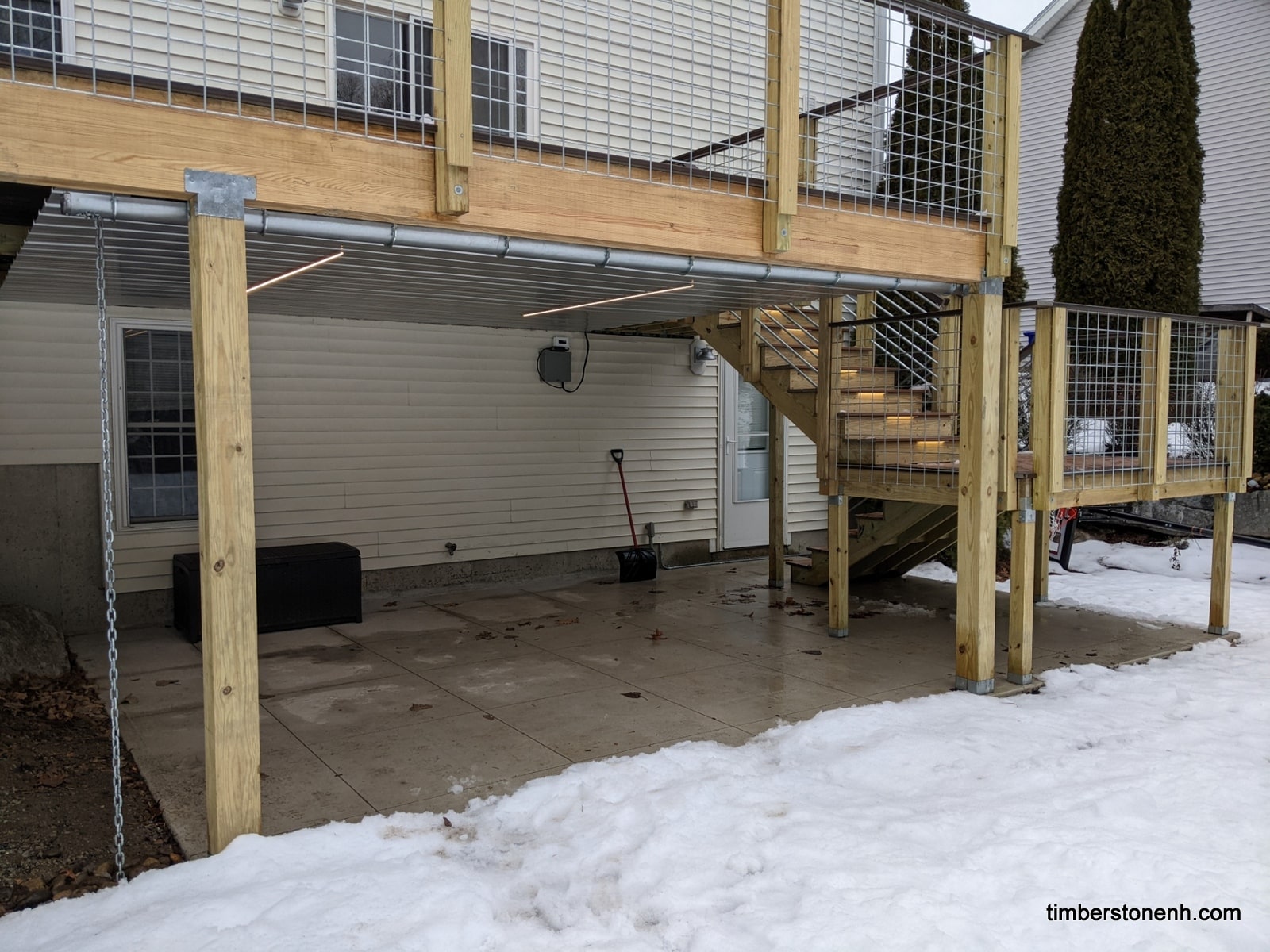Under Deck Dry Spaces in New Hampshire
One of the best ways to maximize your outdoor living when building a second story deck is by adding a dry space underneath. Since that new upper deck—with the great view and awesome lounge area—is such a show stopper, we often overlook the space below. But with just a little extra material and labor you can completely transform the way you use the space. From storage to entertaining, a dry space adds a variety of uses to your new deck; uses that don’t need to be limited by rain and melt.
There are many products and methods contractors use to create dry spaces under decks. One commonality is that the best waterproofing methods be done before any new deck boards are installed. Incorporating a dry space should be part of the initial project plan. For old decks, installing waterproof methods can be done when it is time to replace old deck boards and railing.
Trex RainEscape

At this multi-deck project in Salem we used the Trex RainEscape kit to create a dry space. With the Trex RainEscape kit we installed plastic downspouts between the joists at the end of the deck. We then created troughs along the deck joists with plastic, staples, joist tape, and adhesive. The troughs catch any rainwater dripping between the deck boards and guide it to the downspouts at the edge of the deck. Gutters then carry the water off to the side, leaving the space below nice and dry. You can find a detailed install guide on the Trex website.
During this Salem deck project there was a heavy downpour the day after we installed the Trex RainEscape system. We were delighted to see that the system kept the whole under area completely dry. With the waterproofing in place and working well we then installed the composite decking with hidden fasteners.
Custom Waterproofing
At this unique deck project in Manchester, Patrick used his decade long roofing knowledge to come up with a custom waterproofing system. He created troughs with EPDM rubber. Each trough terminated into a flap of rubber that protected the wood beam and directed the water into the galvanized steel gutters. We used a chain link for a unique and functional downspout. To give the dry space a finished look, Patrick installed a metal ceiling below the troughs. The metal was also great at bracing the deck framing to prevent any racking.


We have had great success creating dry spaces below our decks, but not every dry space is created equal. We recently looked at a leaking deck with an enclosed room below. Plywood had been installed on top of the deck boards and covered with a waterproof paint coating. The paint coating was failing and water was damaging the structure and space below. These systems often fail. The best options are systems that channel water away from the deck and into downspouts.
A dry space is an excellent add on to your deck project, just make sure to pick a waterproofing method that will actually keep you dry!

